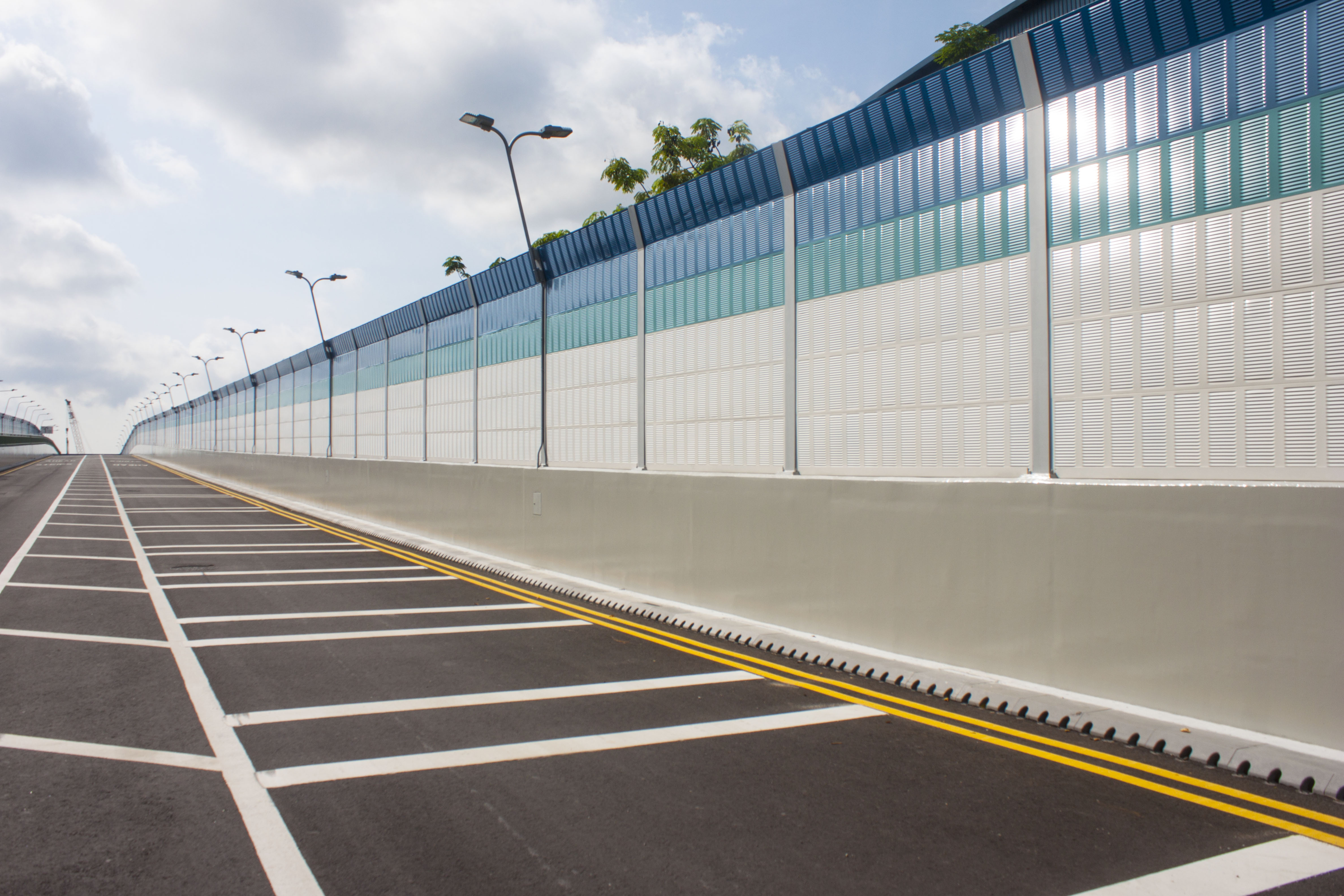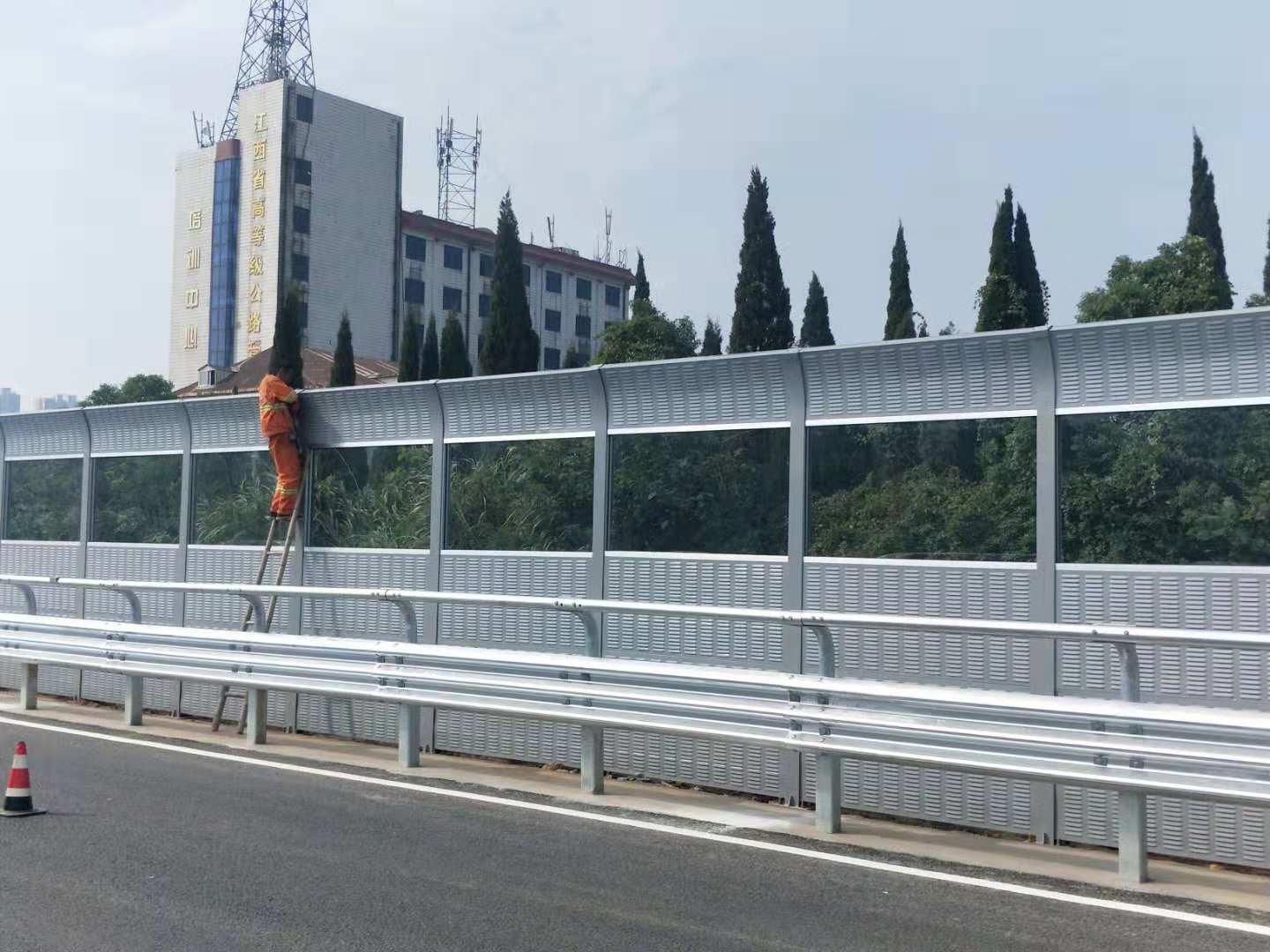Differences Between Highway Noise Barriers and Ordinary Noise Barriers
With the rapid pace of urbanization and the booming development of the transportation industry, noise pollution has increasingly become a significant issue affecting people’s lives. Excessive noise levels greatly reduce people’s quality of life. Noise barriers, which are one of the most widely used facilities to reduce noise, effectively block noise transmission, creating relatively quiet spaces for people. But what are the differences between highway noise barriers and those used in ordinary scenarios?
Many might not realize that highway noise barriers are not the same as those used in ordinary settings. The main differences are as follows:
- Higher Noise Reduction Requirements
On busy highway sections with heavy traffic and high-speed vehicles, the noise energy is high and covers a wide frequency range, so the noise barrier’s reduction effect needs to be more significant. Typically, a reduction of 15 decibels or more is required to minimize the impact on surrounding residents. In ordinary scenarios such as city parks or residential areas, the noise sources are relatively single and less intense, so a noise reduction of about 10 decibels is generally sufficient.
- Greater Structural Strength
Noise barriers in ordinary settings experience less wind and vibration, so the structural strength requirements are not as high. However, on highways, noise barriers face strong air currents and wind forces, especially in coastal areas where typhoons and other extreme weather conditions may occur. Therefore, the structural design and material selection of highway noise barriers are crucial, requiring higher structural strength and stability to withstand wind pressure and vibrations caused by vehicle movement.
- Reasonable Height and Length Settings
In ordinary scenarios, the range of noise impact is relatively small, so the height and length of noise barriers can be flexibly set according to specific circumstances, typically ranging from 2 to 3 meters in height. On highways, the noise spreads over longer distances, so noise barriers are usually taller, generally between 3 and 5 meters, and their length is set continuously based on the road section. Some long highway stretches may have continuous noise barriers for several kilometers.
- More Rigorous Material Selection
Ordinary settings do not require high weather resistance and anti-corrosion properties for materials, so cheaper materials like plastic or wood can be used. Highway noise barriers, being exposed to the outdoors for long periods, must withstand wind, sun, rain, and dust. In harsh environments, ordinary steel might quickly rust and corrode, affecting the barrier’s lifespan and effectiveness. Therefore, materials with good weather resistance and strong anti-corrosion properties, such as aluminum alloys or galvanized sheets, are typically chosen.
- Attention to Visual Interference in Desig
Noise barriers in ordinary settings focus more on blending with the surrounding environment and aesthetics. For example, in parks, noise barriers might be designed with artistic shapes. On highways, the design of noise barriers focuses more on coordination with the overall road landscape and meeting traffic safety requirements, avoiding interference with drivers’ vision. Some highways use colors and shapes similar to the surrounding environment to reduce visual abruptness.
- Greater Installation and Maintenance Difficulty
Installing highway noise barriers requires careful consideration of traffic management and construction safety, making the process more challenging. Maintenance also needs to be carried out while ensuring traffic safety, often done at night when traffic is lighter, with proper warning signs and traffic guidance facilities in place. In contrast, installing and maintaining noise barriers in ordinary settings is relatively easier, with fewer restrictions on construction conditions and safety requirements.
Noise barriers are indispensable on highways. The above are the differences between highway noise barriers and those used in ordinary scenarios, providing a reference for those interested.

